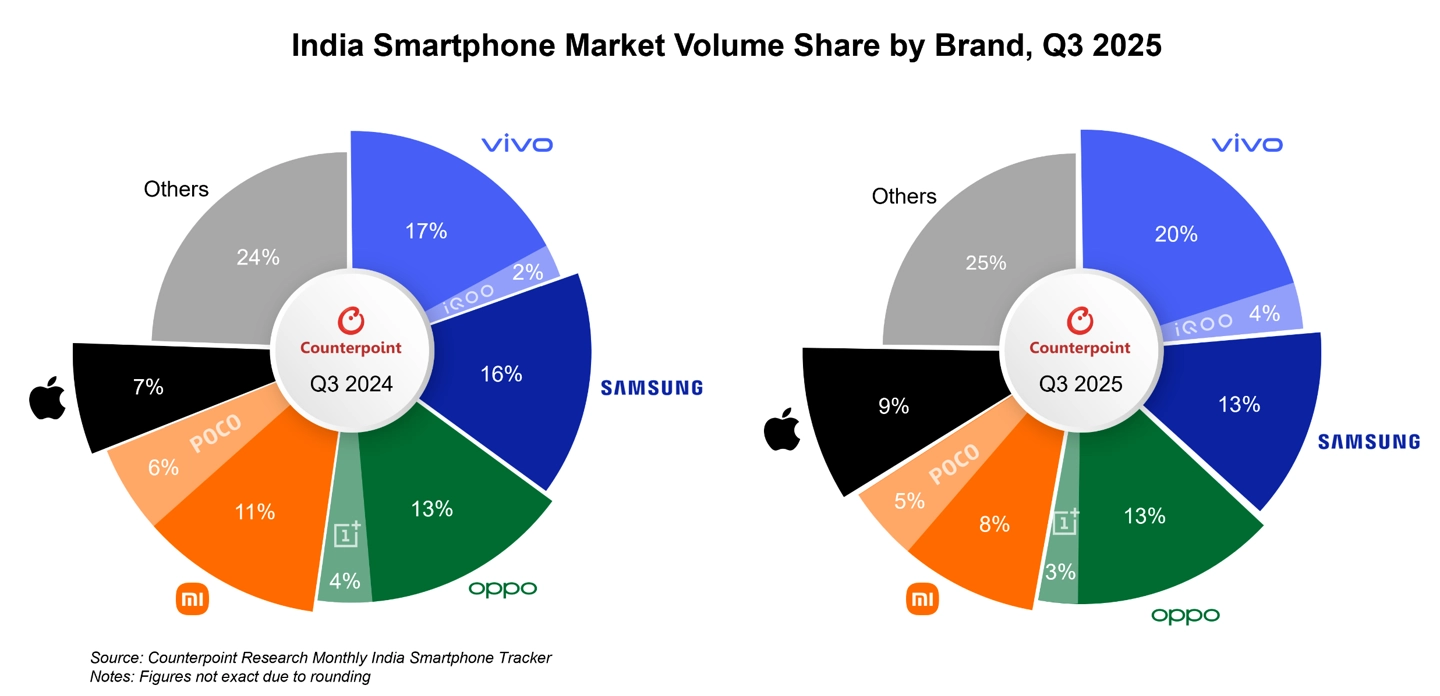According to Counterpoint Research’s India Smartphone Month Tracker, the Indian smartphone market was tributary to incredible growth in terms of shipments in Q3 2025 (July to September), registering a 5% increase in shipments compared to the same period last year. Also, revenue increased by 18%—the greatest quarterly revenue ever observed in India’s smartphone market.
Although Apple made its first appearance in Indian top-five smartphone brands, Xiaomi & POCO collectively performed better than Apple, emphasizing Indian smartphone giants’ influence.
Combined Market Share of Xiaomi and POCO Surpasses Apple’s
In Counterpoint’s latest market share analysis, Apple maintained a market share of 9% in India because of its iPhone 15 and iPhone 16 models. But Xiaomi held an 8% market share, in which POCO accounted for 5%. Also, since POCO belongs to Xiaomi, the total market share generated by Xiaomi’s ecosystem stands at 13
And thus, the Xiaomi Group finds itself in the top three smartphone entities in India, competing directly with giants like Samsung and OPPO. The flagship innovation for affordable pricing provided by Xiaomi and performance-focused youth-centric models provided by POCO are yet again drawing in diverse groups of users.
India – Installed Base Breakdown (Q3 2025)
As per Counterpoint, India’s smartphone market ranking in Q3 2025 will be:
- Vivo: 20%
- Samsung: 13%
- OPPO: 13%
- Xiaomi: 8%
- POCO: 5%
- Apple: 9%
- iQOO: 4%
- OnePlus: 3%
Indeed, due to these percentages, “the combined Xiaomi and POCO share (13%) equals Samsung and OPPO’s result”—which puts “the Xiaomi ecosystem in a clear advantage over Apple” in terms of market volumes.
Xiaomi’s Strength Lies in Its Ecosystem and Local Integration
Xiaomi’s success in India can thus be credited to its “Hyper OS ecosystem,” “local manufacturing,” and “AIoT integration”. The brand continues to set up more manufacturing units in India itself due to its “Make in India” scheme. POCO, a major sub-brand itself, fits into Xiaomi’s vision with its gaming-focused smartphones that value speed. These phones are designed to serve a specific market targeting youth.


 Emir Bardakçı
Emir Bardakçı


